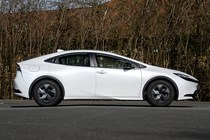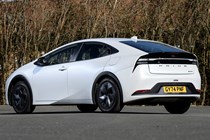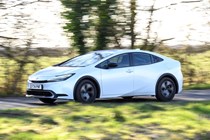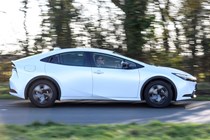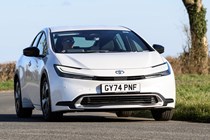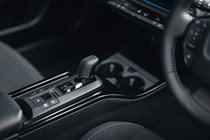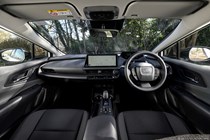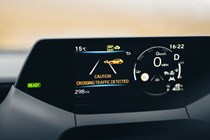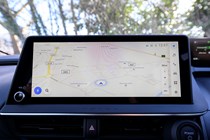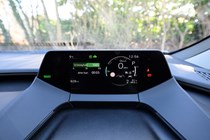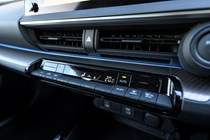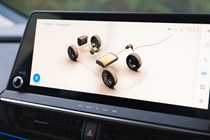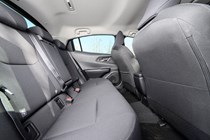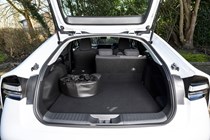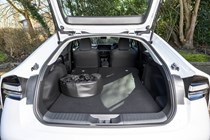Toyota Prius long-term test
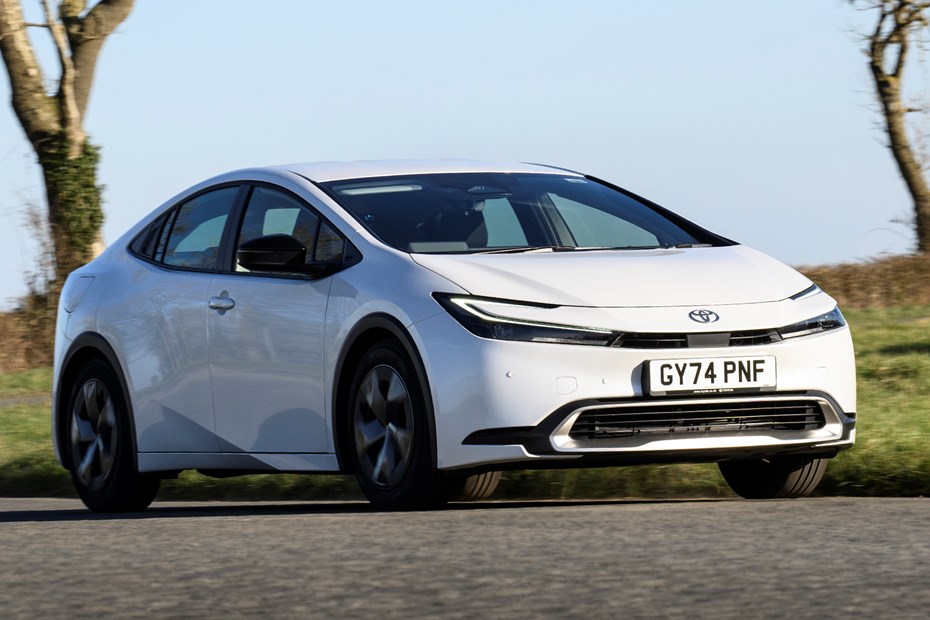
The Parkers team is running a Prius Plug In to find out whether Toyota’s bold new plug-in Prius makes more sense for family buyers than a conventional Corolla Hybrid – and if it’s more than just a green flagship. We’re introducing it to a series of drivers to see how it stands up, starting with the site editor, Keith Adams (below).
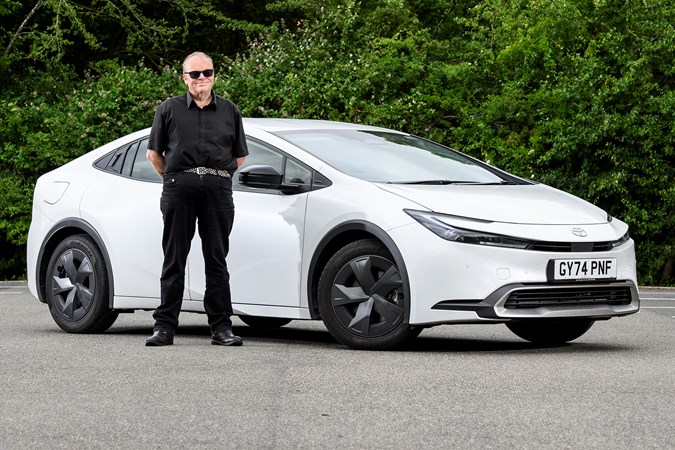
Update 1: Welcome
Introducing the Toyota Prius Plug-in 2.0 PHEV Design CVT
You probably already have an idea in your head of what a Toyota Prius is. It’s the weird and wacky wedge-shaped darling of Uber drivers everywhere, right? A bit dull to drive, a bit worthy – and absolutely not the sort of car anyone chooses unless they’ve got one eye on running costs and the other on emissions zones.
But this one might just change your mind. The new Prius Plug In looks like it’s been styled by someone who actually cared, and I have to say that I absolutely love the moonshot looks. It’s lower, sleeker, and frankly rather handsome. Gone is the awkward upright silhouette and in comes a coupe-like fastback that could almost wear a premium badge. Almost.
We’ve gone for the Design trim – the sweet spot in the UK range – which keeps the cash price just on the right side of sensible, but still gets goodies like heated seats, a big infotainment screen, wireless Apple CarPlay and Toyota’s latest safety kit. Under the bonnet is a 2.0-litre petrol engine and a punchy electric motor, giving a combined 223hp and the ability to go up to 53 miles on electric power alone, officially at least.
We’ll be testing that in the real world, of course. But this long-term test is about more than figures. I’m sharing this one with the team, running the Prius as a daily driver – hauling kids, tackling school runs, doing motorway trips and big shops – to see if this plug-in oddity really is a better bet than something far more conventional, like the excellent Corolla Hybrid, or even a full EV like the former Parkers Car of The Year MG4 EV.
Update 2: First impressions
What we like, what we don’t, and what are our first thoughts?
Long story short: Boot space is a bit tight, no rear wiper, and rear headroom isn’t amazing, but we’re loving the genuinely impressive electric range, fuel economy and sleek styling.
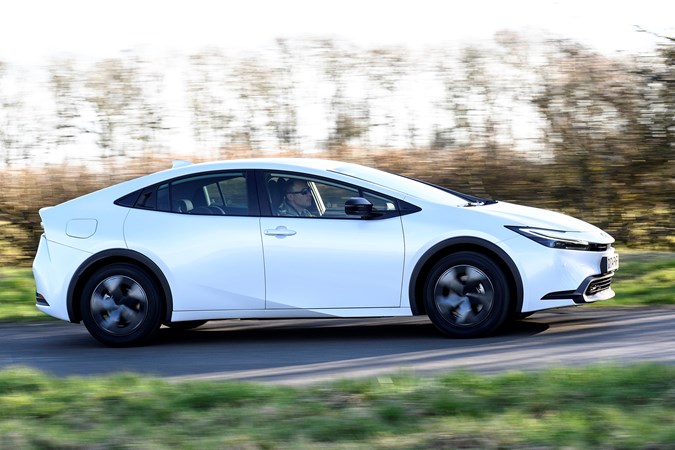
Forgive my indulgence, but let’s get this out of the way first. I didn’t expect the new Prius to turn heads. But it has. Even in this mid-level Design spec, I’ve had people ask what it is, admire the paint, and even come over in the supermarket car park for a chat. It’s not quite the full Tesla effect, but it’s clear this is a car that makes an impression – and not just for being a Prius.
Inside, things are similarly surprising. Toyota’s infotainment system is finally up to scratch, with sharp graphics, quick responses from its slick interface, and wireless CarPlay that actually works. The driving position is low-slung and sporty – more GR86 than RAV4 – and the cabin has a solid feel, even if the materials and trims don’t feel particularly special.
But most impressive so far? The electric range. On the first full charge, I managed just over 49 miles before the petrol engine kicked in – and that’s with a mix of town and A-road driving. It’s quiet, smooth and eerily refined in EV mode, and there’s a surprising turn of pace when you put your foot down.
One of the biggest surprises in daily driving is just how effortlessly quick the Prius Plug In is. I’ll do 0–62mph in just 6.6 seconds, which is properly brisk for a family hybrid. But what stands out more than the numbers is the smooth, instant delivery of power. There’s no faff, no lag, just seamless acceleration that makes overtaking and merging feel utterly stress-free. The anodyne engine note doesn’t even bother me in this context.
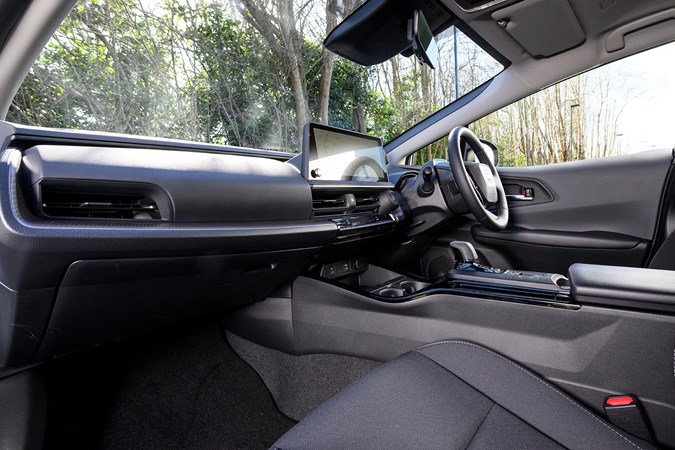
Top 10 best features (so far) of our Prius Plug-in Design
- Up to 49 miles EV driving range: Enough for real world chops for most daily drives
- 12.3-inch touchscreen: Slick Toyota Smart Connect+ system with decent satellite navigation
- Wireless Apple CarPlay: Quick to pair and easy to use, but not so with Android Auto
- Striking fastback styling: Genuinely cool looking, people keep asking me about it
- Heated front seats and heated steering wheel: Cold morning essentials, even in ‘summer’
- Dual-zone climate control: Physical controls, not buried in menus
- Central digital driver display: Unusual layout, but clear and legible
- Toyota Safety Sense 3.0: Includes adaptive cruise and lane assist as standard, and it’s excellent
- LED headlights with auto high beam: Great vision, but not as good as a full matrix set-up
- Vehicle-to-load (V2L): Plug in small appliances using the car’s battery in the back seat
If there’s one area where the Prius Plug In really disappoints me and that’s the boot. At 284 litres, it’s not just small for the class, it’s barely larger than a supermini’s. And it’s made worse by a high load lip and shallow floor caused by the plug-in battery pack. In a family car, that’s a problem. For context, the Toyota Corolla Hybrid Touring Sports offers 598 litres in the boot – more than twice as much usable space, and without the awkward packaging compromises.
Equally baffling is the infotainment omission on our Design-spec Prius: no Android Auto at all. Not even wired. It’s especially odd given that wireless Apple CarPlay works flawlessly and the infotainment system itself is otherwise excellent – fast, slick and easy to navigate. It appears to be a specification anomaly rather than a technical limitation, but I’ll dig into this one and update.
More to come in the next update, including how it handles the day-to-day chaos and whether the novelty wears off…
Update 3: Fuel economy and efficiency
Surprisingly frugal, or probably not…
Long story short: The real-world economy is excellent, even if you don’t plug it in. However, do that and charge overnight, and fuelling costs really are low.
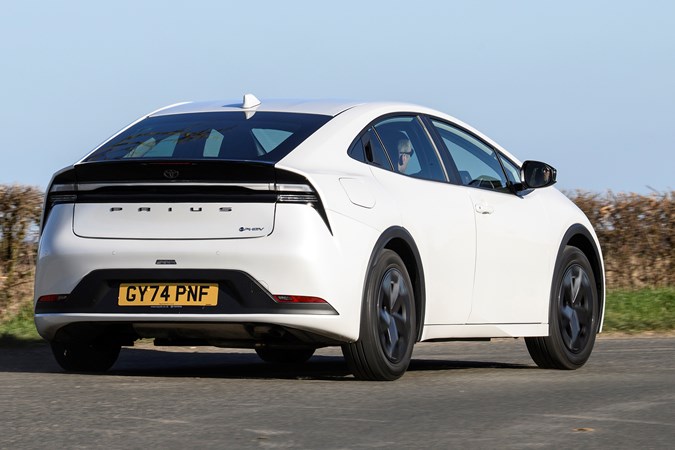
Time to talk about what the Prius is supposed to be all about: efficiency. And here, it’s an absolute star. I’ve deliberately held off plugging it in for a few days – partly to test its standalone hybrid performance, partly out of necessity – and it easily returned just over 60mpg in a mix of A-road commuting, short commuting runs, and the odd motorway stint. That’s without switching into EV mode manually.
When you do plug it in and top up the battery, things get even more impressive. A short urban loop with full charge saw it returning well over 100mpg, with the petrol engine barely cutting in. Toyota’s fifth-gen hybrid system really is at the top of its game. In addition, refinement is superb, with barely any noise unless you really mash the throttle.

At town speeds and cruising on EV power, it’s almost luxury-car quiet. Ride quality is also excellent, soaking up potholes and speed humps with a calmness that makes you forget this thing has low rolling resistance tyres and a slippery aero-focused shape. But, yes, do forget the claimed 565mpg – not going. to happen.
Of course, there are quirks. The low roofline and shallow door opening mean I’ve banged my head getting in more than once. It’s a price you pay for that sleek styling. Still, if you told me a few years ago that the Prius would be this refined as well as economical, and this desirable to look at, I probably wouldn’t have believed you.
More next time, where I hand it over to a second, critical driver – my partner.
Update 4: second opinion
Keith hands over the Prius to his partner, and she keeps banging her head
Long story short: The light controls, great phone integration, and provision of loads of cubbies really impress, unlike the small boot, annoying loading lip, and painful door openings!
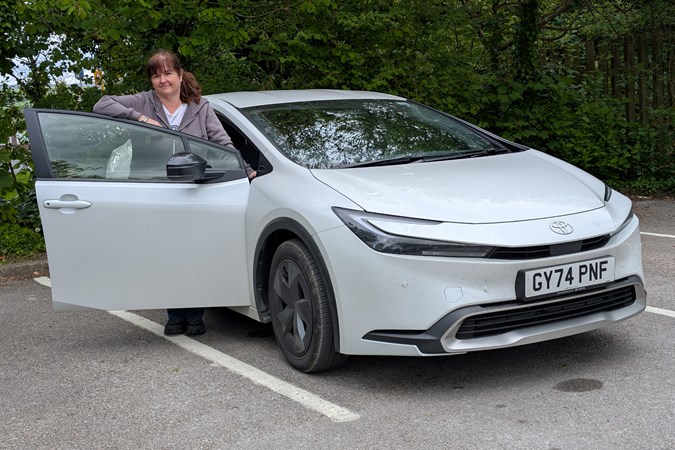
It’s always revealing to hand the keys to someone else and see how your long-term test car holds up. Sue’s spent a few weeks with the Prius straight after time in an Audi A5 Avant, using it for everything from commuting and taking her mum (and wheelchair) out for trips to supermarket dashes – and she’s come away largely impressed.
‘I really like how easy it is to drive. The steering is super light, it just flows around town,’ Sue said. The Prius’s calm, user-friendly nature clearly struck a chord. She found it simple to park, liked how compact it feels mixing it in traffic, and enjoyed the smooth, electric-leaning performance at lower speeds. ‘It doesn’t feel big or awkward like some hybrids do. I just get in and go.’
‘I’m also a big fan of the infotainment and tech – especially Apple CarPlay, which properly fills the screen, and it connected instantly,’ she said. The interior storage received glowing praise: ‘There’s loads of places to put stuff.’ But it wasn’t all good. Despite being 5ft 3in, so not that tall, Sue’s now a fully paid-up member of the Prius doorframe victims’ club: ‘I’ve banged my head twice now.’
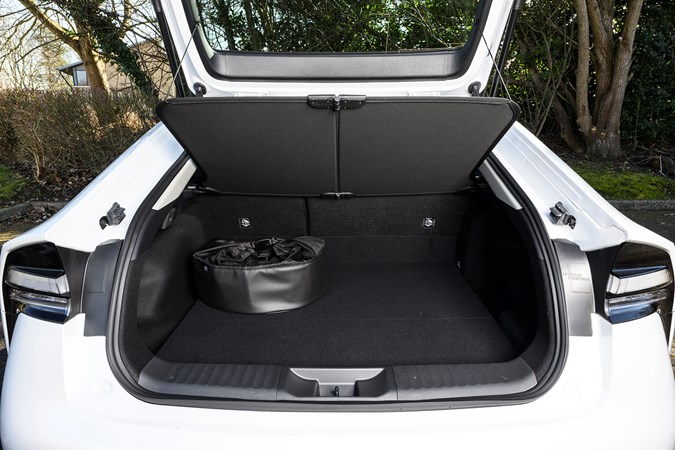
There are quirks. The boot is shallow and not massive (because of the battery pack), the lack of a rear wiper is baffling in the UK climate, and rear-seat passengers will definitely notice the sloping roofline. ‘The boot’s small – and that lip is just annoying. You have to lift everything up and over it, and my mam’s wheelchair doesn’t fit without folding down the rear seats. Not good.’ But as a family car for those who can charge at home or work, this could be a very smart choice.
Still, her parting verdict was clear: for daily duties, this feels like a car that gets a lot right. Quiet, easy-going and full of useful touches – just maybe bring a helmet. But this is telling: ‘I prefer it to the Audi, it’s just so nice to live with and economical.’
Next time, we’re handing over to another member of the Parkers team – with a very different perspective…
Update 5: third opinion
Sue hands over the Prius to Parkers Deputy Editor Luke Wilkinson
Long story short: Luke has an unrelenting mileage schedule. His most recent trip saw him cannonball from the Parkers HQ all the way to Glasgow for a heavy metal gig. Scroll down to find out what he made of it.
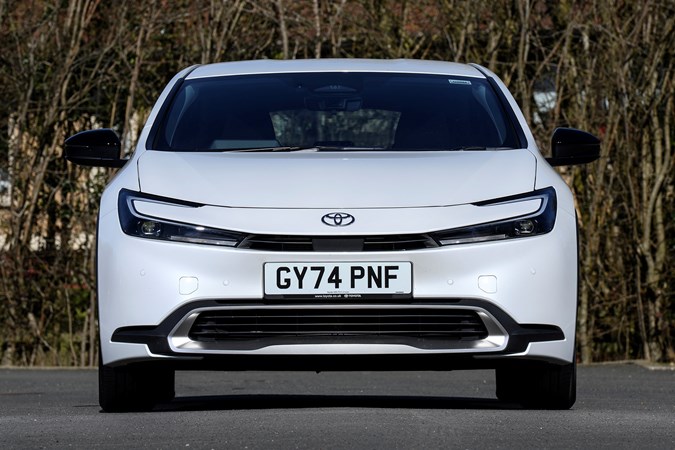
If you’ve read my long-term Toyota C-HR report, you’ll know I’m not a huge fan of Toyota hybrids. They’re not bad, but as a petrolhead, they just don’t excite me. I’ve never liked CVT droning, lifeless steering or overly fussy driver aids. The C-HR was the worst offender, and the Prius shares the same platform, so I feared a repeat.
I also couldn’t have picked a worse journey – a Peterborough–Glasgow round trip via Cumbria to collect my sister, followed by a second long-haul for Easter. Around 2,000 miles in a car I didn’t want to drive. But it wasn’t as bad as I feared…
Come on then. First impressions?
The Prius is a solid cruiser thanks to excellent fuel economy. I managed around 50mpg even with a flat battery and heavy right foot – which makes you wonder why you’d bother with the PHEV over the regular hybrid.
Comfort is surprisingly good. The damping balances control and compliance well, helped by our car’s 17-inch wheels and thick tyres. Refinement is strong, with the engine staying quiet unless you really floor it, at which point the CVT unleashes its signature drone. The sleek windscreen helps too – wind noise is minimal, making it relaxing at speed.
Erm. This is all sounding quite positive?
Yes, up to a point. But the safety tech ruins the experience for me. It’s intrusive, overly sensitive and far too complicated to switch off.
Settings are buried in submenus within the digital cluster – each system like lane assist or traffic sign recognition must be turned off individually. It’s a faff, unlike the simple one-button system in Renaults.
Worst of all are the front cross traffic assist and driver monitoring. One bongs when a car is sort of nearby at a junction. The other tells you to face forward constantly, like a stern supply teacher. I ended up swearing at it and pulling over to disable it mid-journey.
Enough ranting. How does it drive?
Surprisingly quickly. The PHEV kicks out 223hp, only about 40hp less than a Golf GTI. Instant electric torque means you’ve always got go – it’s great for overtakes.
But the eco tyres spoil things. Traction is poor, with the front wheels scrabbling for grip even under light throttle. The traction control’s constantly flashing on twisty roads. If I had to run one, I’d ditch the tyres first thing.
Final thoughts?
The Prius isn’t for me, but it’s undeniably efficient, comfy and quick. If you’re not ready for full EV life but want low running costs, it makes sense – especially with Toyota’s 10-year warranty if you service it at a dealer.
But the tech wore me down. I dreaded each drive knowing I’d either need to wrestle the settings or tolerate constant bongs and flashing warnings. It doesn’t help that it’s just not fun to drive.
It’s a good car. Just not for me. Please don’t make me drive it again, Sue.
Next time, we’re handing over to another member of the Parkers team – with a very different perspective…
Update 6: fourth opinion
Next up, Parkers Senior Staff Writer Graham King spends some time with the Prius
Long story short: a highly competent motorway cruiser, but long journeys proved to be a pain – literally.
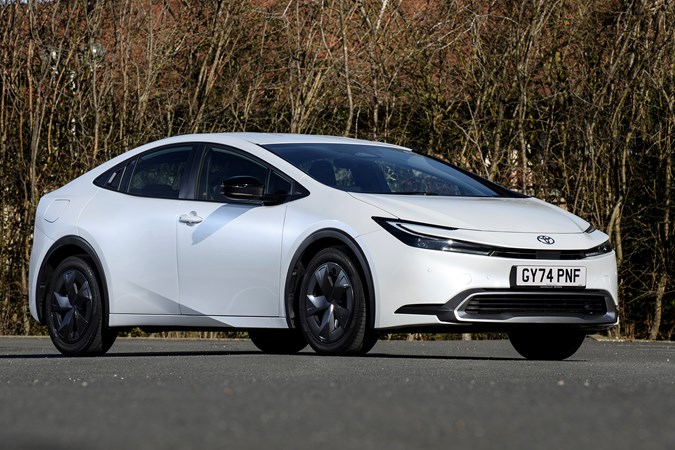
Like Luke, I’ve had long, recent exposure to Toyota hybrids, spending six months with a Corolla Commercial. So, I was keen to find out how the Prius compared.
It came to me via Keith, who’d grabbed it from Luke. We live on opposite sides of the Yorkshire Dales [with Keith on the best side! – Ed], so met to exchange cars halfway across. A spirited drive back east was a great way to get acquainted with the Prius. I agree with Luke – it’s not fun to drive, but it’s quick and composed. Overly light steering and slightly vague brakes aside, it’s an effective means of getting from A to B at pace.
Settling in for the long haul
Entirely incidental point: I think the Prius looks like a computer mouse, thus my partner immediately christened it Jerry. More relevantly, the steeply sloping windscreen and bonnet mean the Prius’s front end appears to be miles away.
That could’ve been an issue for there’s limited on-street parking at my place. Honestly, without the front and rear parking sensors and reversing camera, parallel parking the Prius would be very hard work. Fortunately, both the sensors and camera give a very accurate picture of the surroundings.
I echo Luke’s comments on the cross-traffic alert and driver monitor; I thought the latter’s orders to sit up particularly impertinent. It’s worth taking the time to turn them off. I have a Google phone, but the lack of Android Auto didn’t bother me. I Bluetoothed audio and the built-in sat nav is perfectly good.
Most of my journeys are long schleps of over 100 miles each way. It’s the kind of driving the Prius is made for. It’s quick, quiet, efficient – I got over 60mpg – and the ride combines buttery smoothness with solid body control. Just using it around town would be a bit of a waste. My partner, a cutting critic of a car’s passenger experience, had precisely zero complaints. I, however, realised there was an issue that would cut my time with the Prius short.
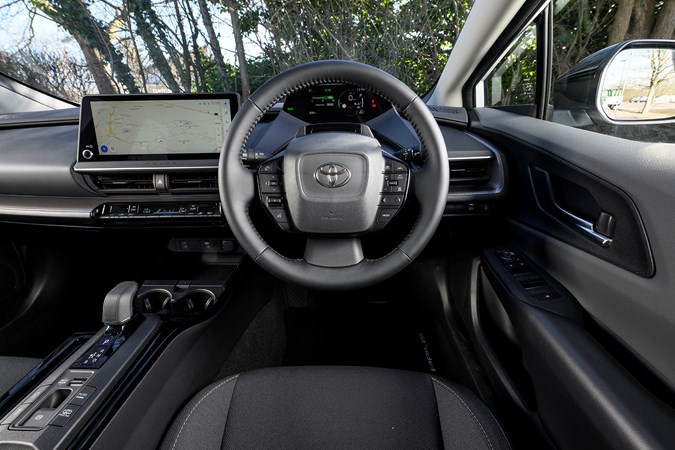
It’s a pain – literally
Nearly 30 years ago, I was in the middle of a growth spurt when I slipped on a rock and the small of my back took the full impact. To this day, it can still cause problems. Car seats are a particular source of aggravation, but I hadn’t encountered any issues in the last two or three years driving 30 or 40 different cars. Until the Prius.
An hour in the driver’s seat and I can feel my back start to nag. After two hours, it’s extremely unhappy. After two-and-a-half hours, it’s absolutely furious. My weekly commute from Yorkshire to the Parkers office takes about 2.5 hours. You can see the issue. I’ll be dealing with the effects for some time…
Now, this is very specific to me. The Prius doesn’t have bad seats. But the driver’s seat just puts a bit of pressure in the wrong place on my spine. I’ve tried adjusting the seat every way it can be, but it didn’t help. My suggestion is that, if you have any back issues, you take an extended test drive in a Prius to find out if it sets your back off.
I hope it doesn’t. I rather warmed to the Prius. It’s such a competent tool for the long-distance driving I do, with just enough extra about it that it doesn’t bore you to tears like previous generations did. Could this, in fact, be the first Prius with a trace of character? I think it might be.
Next time, we’re handing over to another member of the Parkers team – with a very different perspective…
Update 7: show me the money
Car buying editor Ryan Gilmore gets his calculator out and works out what’s what
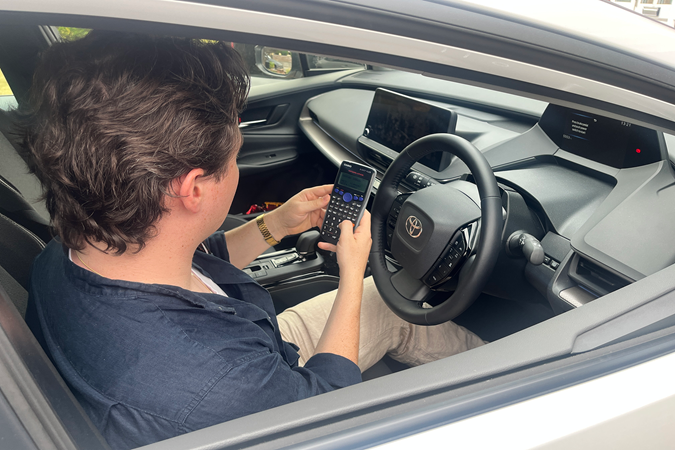
Yes, there’s another temporary custodian and other opinion to be had on the Prius, and there’s not much more I can say that’s not already been said. I agree that it’s a quick but dull car to drive and that the driver assistance tech can be irritating. The only thing I can add is I like the interior light – it looks very art deco.
So instead, I’m going put my car buying hat on and look at the value prospect, usually a Toyota strong suit. I’ll be using ballpark figures to avoid this becoming outdated the moment it goes live but this quick maths should offer some useful insight into whether the Prius is a sound buy.
Leasing
And it’s not a strong start with personal contract hire (PCH). Looking at our partners over at Leasing.com and the Prius has been hovering around the £300-£400 mark for a while now with no sign of it budging. It’s certainly not bad value for money, but there’s far better about and a quick look at the calibre of plug-in hybrids available for notably less money per month proves this. It’s not just the slow-sellers like the Volkswagen Passat either – there’s the Hyundai Tuscon, Volkswagen Tiguan and even the gigantic Skoda Kodiaq available for less per month than a Prius.
The one that caught my eye was the BMW 330e and its nicer interior, better driving dynamics and far posher badge, and for only a couple of quid more per month. How can the Prius compete with that?
Finance
So, I’ll move on to personal contract purchase (PCP) or finance. The rates are decent for the car’s value, with a realistic monthly payment between £400-£500 with deposit rates of between £4,000 to £8,000. A 6.9% APR rate isn’t fantastic but isn’t woefully bad like other deals I’ve spotted.
Cash value
The Prius starts at £37,995, quite a bit considering the previous generation Prius cost around £25,000. While it’s now got a costlier plug-in hybrid system and it’s posher, the new price tag is quite a jump.
Upgrade to the Excel trim and you’ll be slapped with the Expensive Car Supplement applied to all cars worth over £40,000, a kick in the teeth the Prius didn’t need. That means the Vehicle Excise Duty (VED or road tax) for years two through six is £620, not £195. And yes, we now live in a world where a Toyota Prius can be classed as a luxury car.
Is the Prius good value for money?
All the above points to a big no. There are better, equally efficient cars on sale for a similar monthly cost or the same cash value.
Toyota’s reliability record should help cut down maintenance costs in the long term, as will the excellent 10-year warranty (valid so long as its serviced annually by Toyota), but that doesn’t claw enough back.
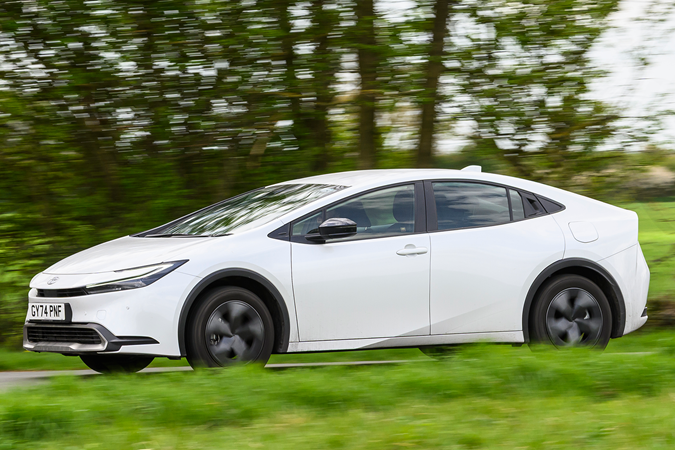
The Prius won’t be a huge seller for the brand (it wasn’t originally intended to be offered in the UK), and I doubt Toyota will push it with affordable finance deals. There’s a wave of new Toyota EVs on the way which will help Toyota reach its zero emission mandate (ZEV) – not the (comparatively) polluting Prius – so don’t expect too much discounting.
As for a used example, Toyotas traditionally hold value well. The cast-iron reliability is well-known which keeps used prices buoyant. Early indications are interesting, the cheapest Prius I’ve seen on Parkers Cars for Sale is £30,000, not bad considering plug-in hybrids have a tendency to depreciate. So, if you do want one, it shouldn’t lose money hand over fist at least.
Toyota Prius Plug In long-term test: scores on the doors
Model tested: 2.0 PHEV Design CVT
| Current mileage | 5,558 |
| Real world average fuel consumption | 67.3mpg (latest report) |
| Official combined fuel economy (WLTP) | 475-565mpg |
| Parkers miles per pound calculation (mpp) | N/A |
| Dates tested by Parkers | March 2025 – September 2025 |




